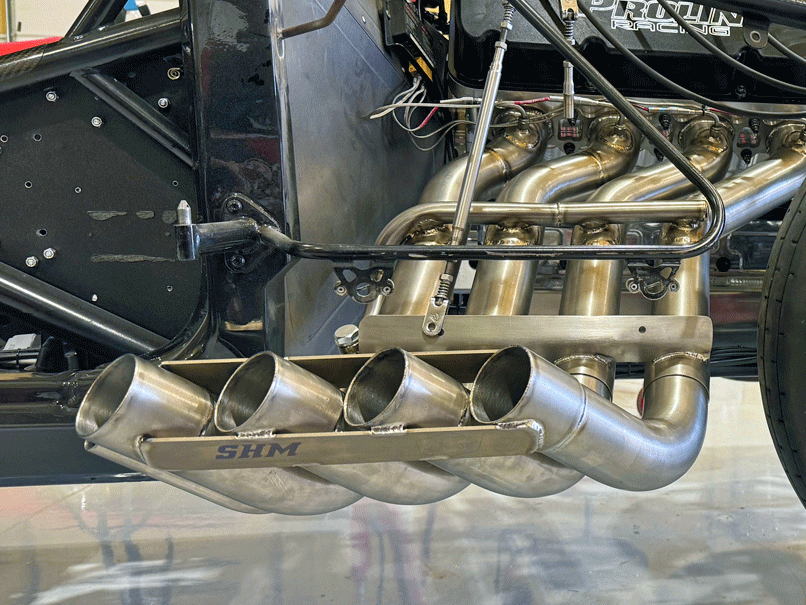How to Solve 10 Common TIG Welding Problems [Guide]
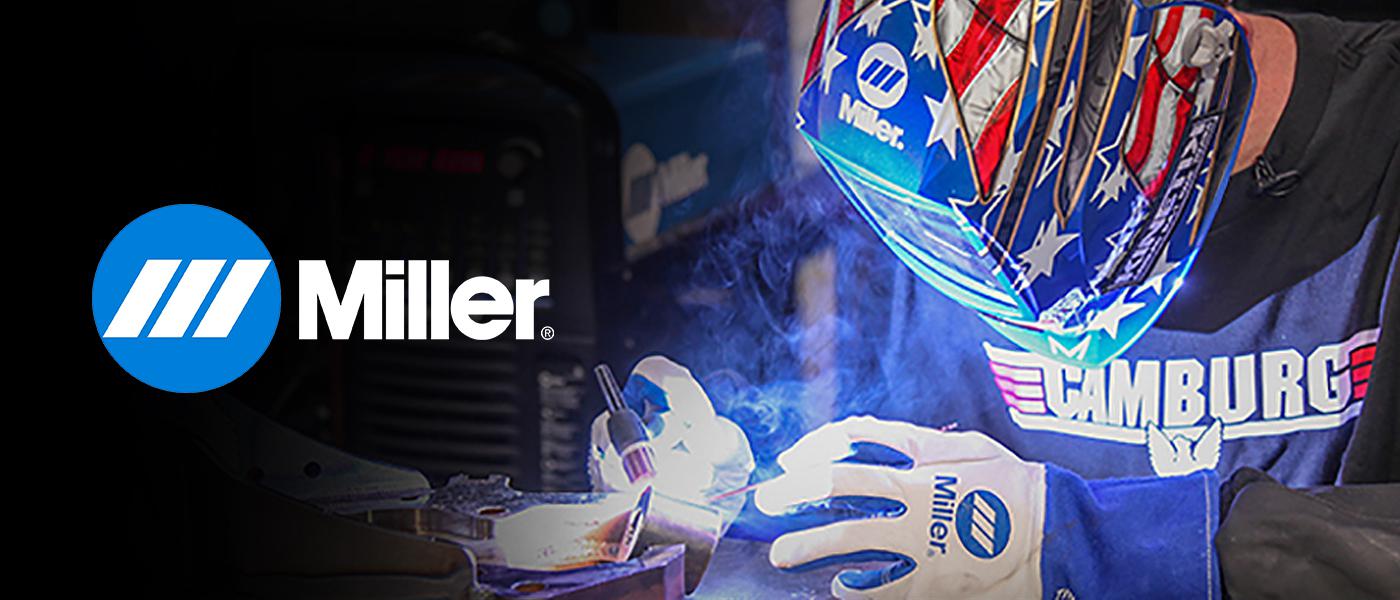
Learn about common mistakes when TIG welding, as well as basic tips on how to prevent these errors.
Poor Gas Coverage Leads to Contamination
This weld shows contamination caused by lack of shielding gas, which can happen when the gas isn’t turned on, there is too little or too much gas shielding, or the gas is blown away.
- To troubleshoot gas contamination issues, check the cylinder label to ensure you’re using the right gas for TIG welding, generally 100% argon. Attempting to weld with an argon/carbon dioxide mix (common for MIG welding) will cause contamination.
- Set the proper gas flow rate, recommended at 15 to 20 cubic feet per hour (cfh). Welders commonly assume higher gas flow provides greater protection. In fact, excessive gas flow creates turbulence that pulls in unwanted contaminants (and can cause arc wandering).
- Check all fittings and hoses for leaks that can cause weld contamination. Rub soapy water over the hose and fittings. If bubbles form, you have a leak and should replace the defective components.
- If you have a full cylinder, the right type of gas, and no leaks, you may have a tank contaminated with moisture. Shielding gas cylinder contamination is infrequent but possible.
Welding aluminum in the wrong polarity/adjusting balance
This TIG weld (Figure 2A) was created with the machine’s polarity set on direct current electrode negative (DCEN). The weld did not break through the aluminum oxide layer. To defeat this, always TIG weld aluminum with the polarity set to alternating current (AC).
TIG welding in AC allows the electrode positive (EP) portion of the cycle to blast away the aluminum oxide while the electrode negative (EN) portion melts the base metal. A feature called AC balance control allows operators to tailor the EP/EN ratio. If you notice brownish oxidation or flakes that look like black pepper in your weld puddle (Figure 2B), increase the cleaning action. However, note that too much EP causes the tungsten to ball excessively (Figure 2C) and provides too much etching. Lastly, when TIG welding aluminum, do not start welding until the puddle has the appearance of a shiny dot. This indicates the oxide has been removed, and it’s safe to add filler.
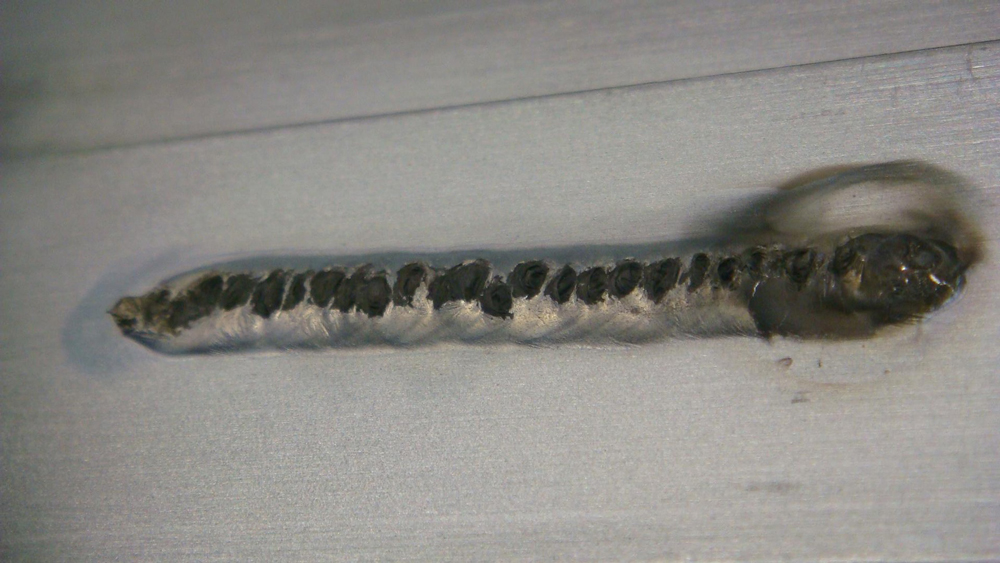
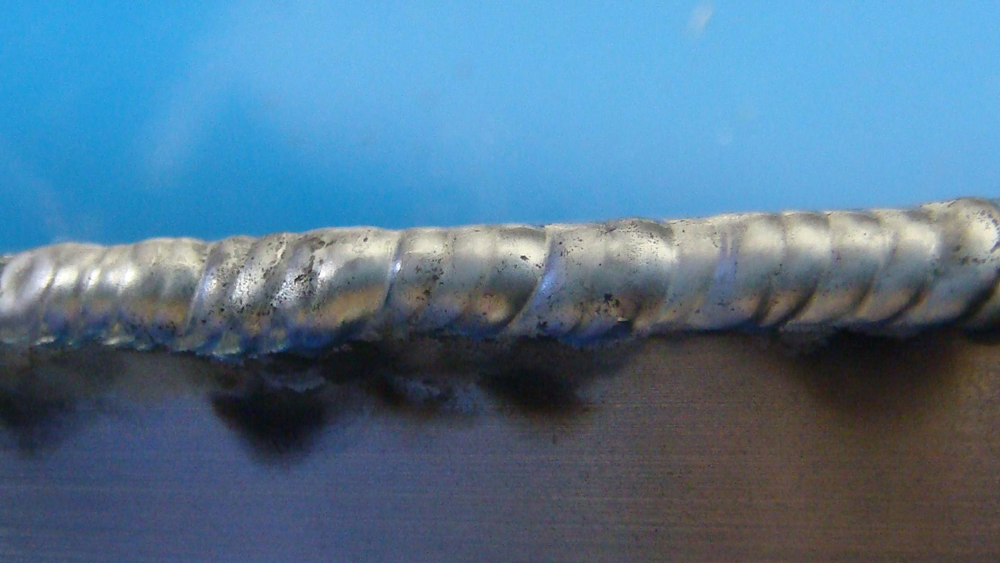
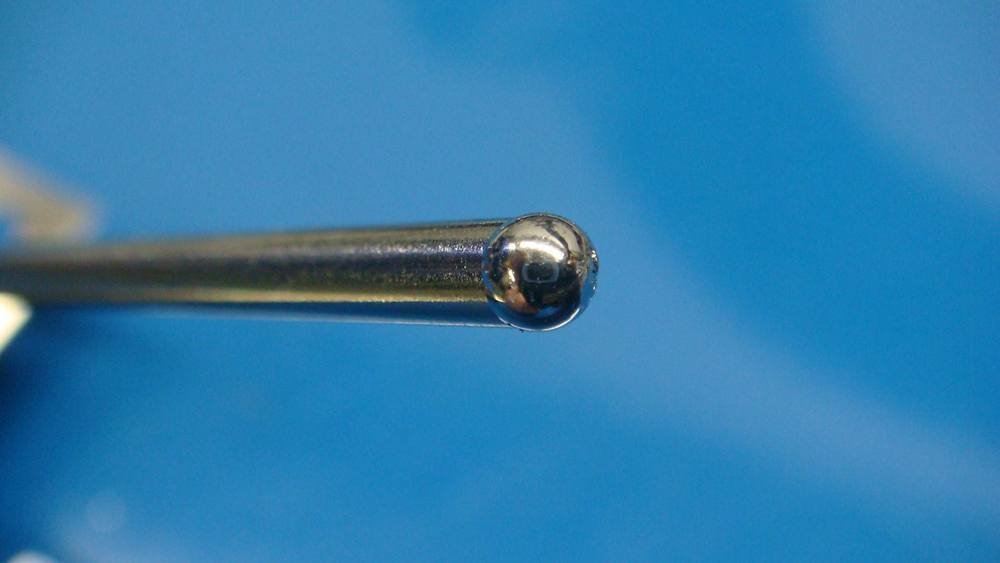
Weld Graininess
Figure 3 shows a bead with a grainy appearance, typically caused by filler metal problems. For instance, a 4043-aluminum filler rod from one manufacturer may have different properties than a 4043 rod from another manufacturer. The welder may need to adjust filler brand accordingly. The rod may also be defective (too much of a certain ingredient). The welder may even have the wrong type of rod, such as 4043 filler instead of 5356 filler.
Before welding, always check the filler metal type and remove all grease, oil, and moisture to prevent contamination.
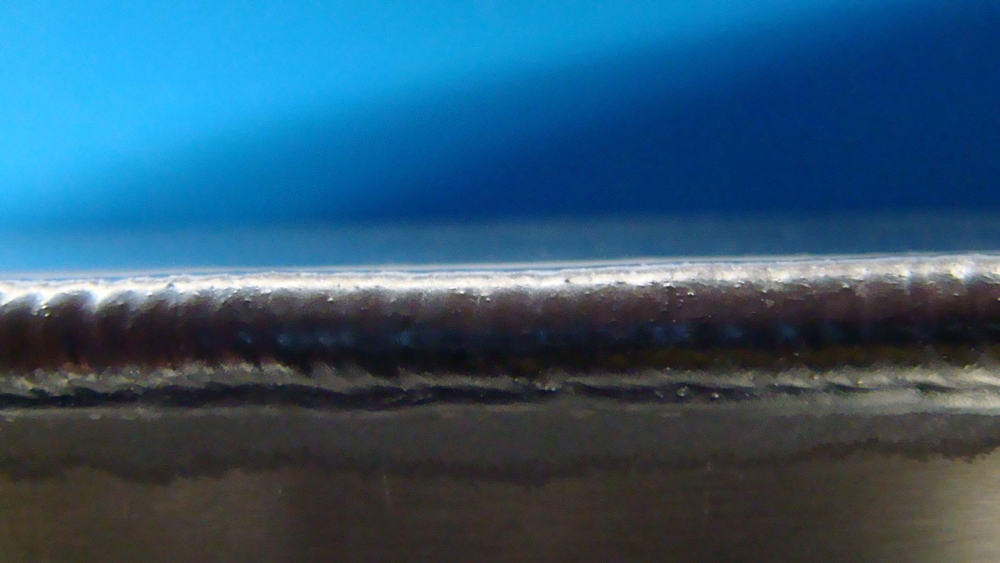
Lack of fusion at the root of a T-joint or a fillet weld can be caused by several factors, including improper fit-up, holding the torch too far from the joint, and improperly feeding the filler rod. This issue may be more common with a transformer-based machine, as the arc tends to wander between the sides of the joint as it seeks the path of least resistance. In this case, reducing arc length provides better directional control and helps increase penetration. It’s also important to avoid under-filling the joint or welding too quickly.
Inverter-based machines (especially those with advanced output controls such as adjustable frequency and pulsing controls) offer more arc control. A more focused arc cone provides better directional control over the weld puddle and deeper penetration.
Craters
Craters, such as the one in Figure 4A, typically occur at the end of the weld and often lead to cracking. Causes include instantly reducing the welding power (which results in the puddle cooling too quickly) and removing the filler rod too quickly at the end of the weld. You can easily fix crater cracking by continuing to feed filler rod while slowly reducing current at the end of a weld to produce a good-looking weld bead, as seen in Figure 4B.
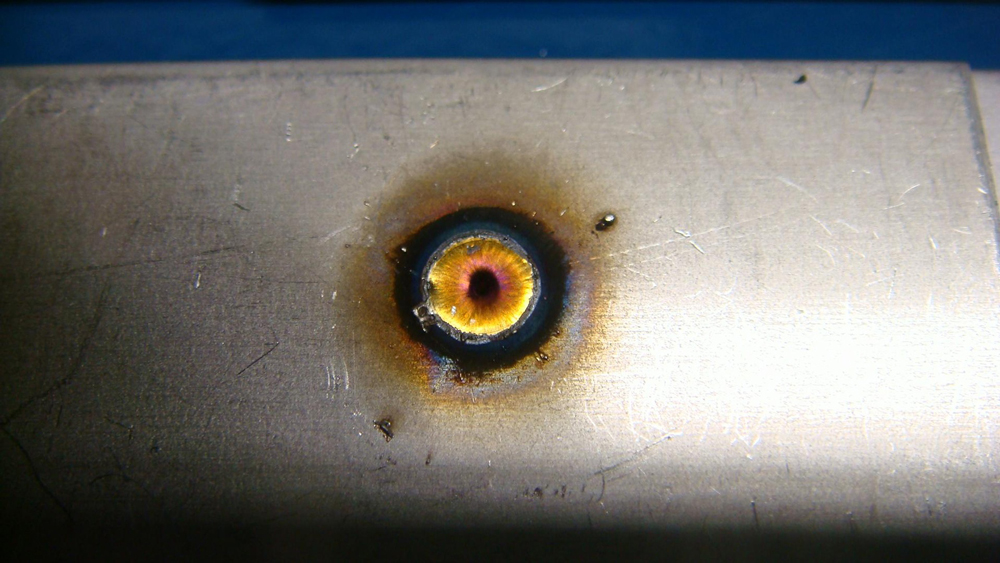

Dirty Base and/or Filler Metal
Cleaning the materials before welding is important. Figure 5 shows what happens when you don’t clean mill scale off hot-rolled mild steel. All base and filler metals should be cleaned, whether the contaminant is mill scale, aluminum oxide, or dirt and grease. Grind, brush, and wipe away all potential contaminants. For cleaning aluminum, use a stainless steel brush dedicated to the task to prevent contamination from other metals.

Poor Color on Stainless
Figure 6 shows discoloration on a stainless-steel weld caused by overheating, which affects a material’s color and degrades its corrosion resistance and strength. Unfortunately, nothing can be done to fix this error once it’s made. To prevent overheating, reduce amperage, increase travel speed slightly or shorten the arc length. If your welding equipment features a pulser, learn how to use it. Pulsing reduces heat input and offers excellent puddle control.
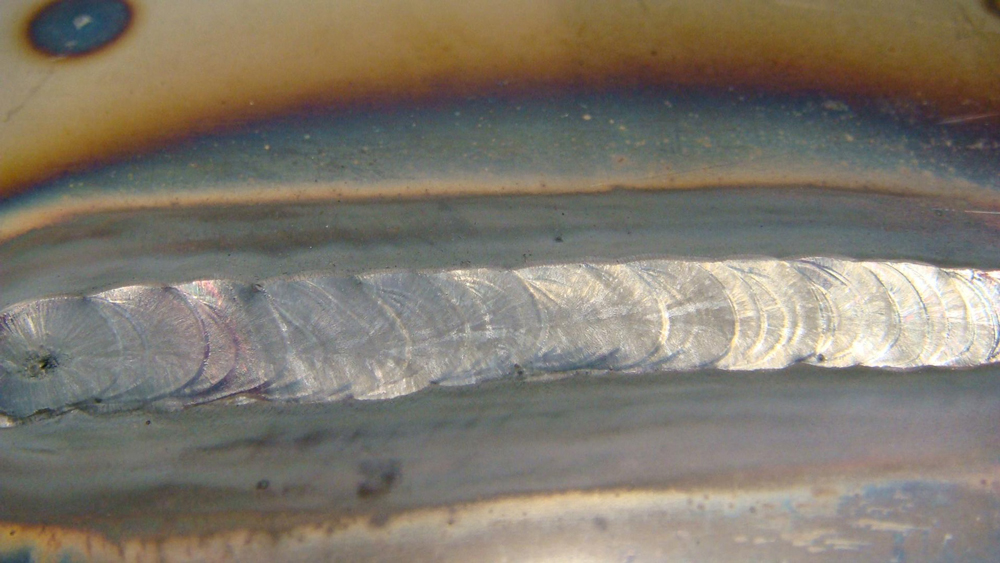
Sugaring on Stainless Steel
Figure 7 shows sugaring on the backside of a stainless-steel weld. Sugaring occurs when the weld is exposed to oxygen in the air. The best way to prevent sugaring is back purging the weld with argon shielding gas or reducing welding amperage.
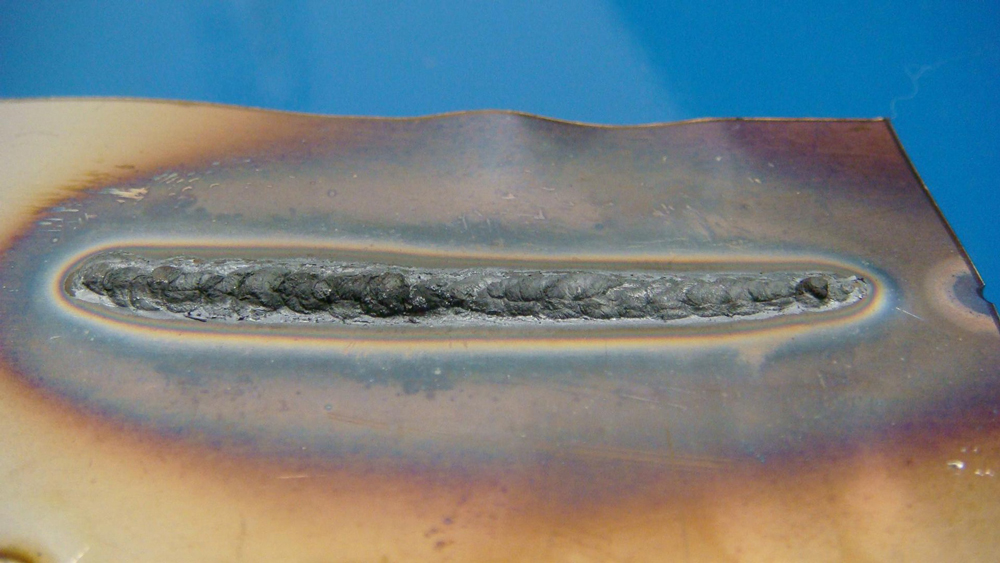
Too Much Amperage on Aluminum
Figure 8 shows an aluminum weld with the amperage too high. This creates a wider profile and an ill-defined bead and can potentially lead to burn-through. To solve this, reduce amperage and/or increase travel speed.
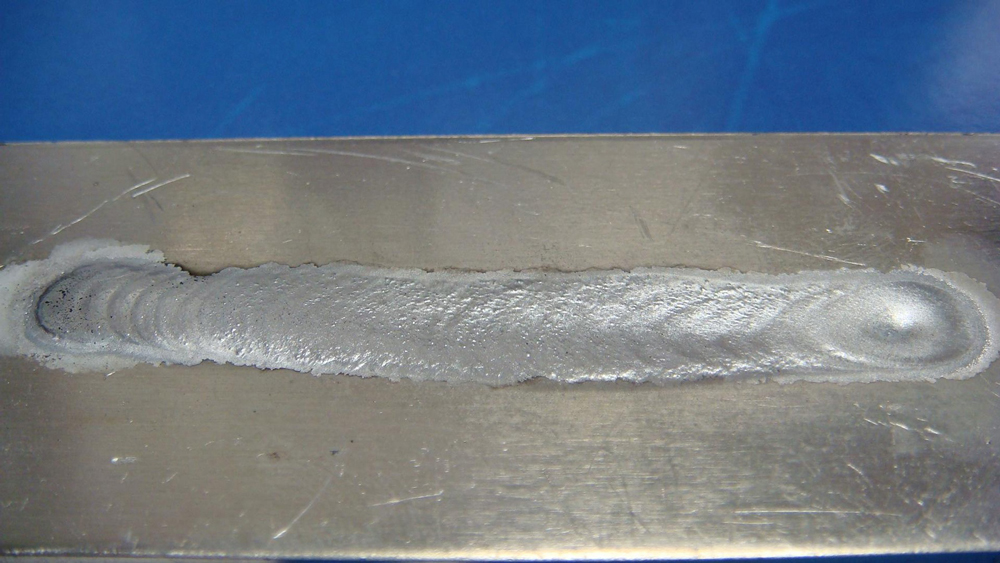
Proper Arc Length Control
The color change in the middle of this aluminum weld bead (Figure 9) resulted from an increase in arc length (the distance between the electrode and the base metal). Holding too long of an arc increases heat input and the potential for distortion and widens the weld bead while decreasing penetration and bead appearance. Practice holding a consistent arc length to improve heat input control and weld bead quality.
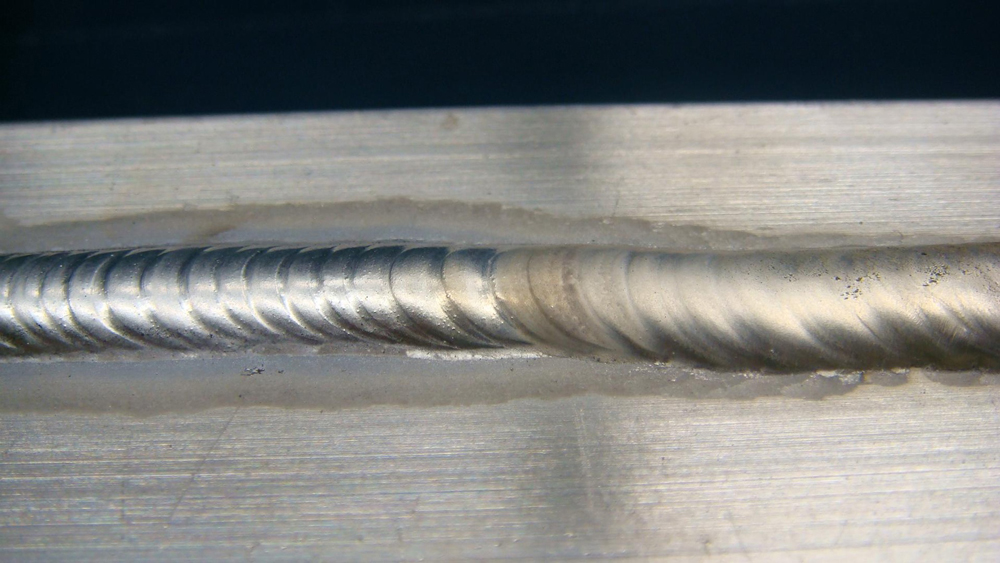
For more information, visit MillerWelds.com.
 MEMBERSHIP LOGIN
MEMBERSHIP LOGIN JOIN PRI
JOIN PRI

